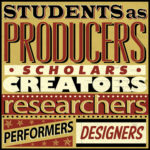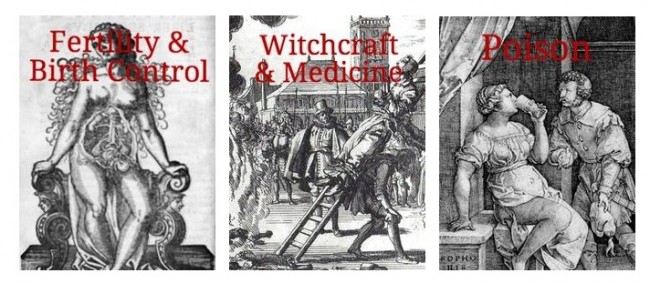Medicine and Magic: Students as Producers in the Humanities
The post below is about a fantastic “Students as Producers” course taught by Vanderbilt’s Holly Tucker. For more ideas on engaging students as producers of knowledge, come to the CFT’s Celebration of Learning next Monday. The event will feature a highly engaging keynote by Georgetown University’s Randy Bass, as well as an exhibition of more than 25 student projects from all over campus. More info and RSVP here!
“For as much as we all have become consumers of web content, most people–including and especially college students–have had little opportunity to be producers of this content.”
The quote above is from “Medicine and Magic–or What I Did This Spring Semester,” a blog post by Holly Tucker, Vanderbilt Professor of French Studies and Professor of Biomedical Ethics & Society. In the blog post, Holly describes her spring honors seminar, “Leeches & Lancets: Early Medicine in Cultural Contexts,” and the online projects her honors students are producing as part of the seminar. You can view the projects here:
- Fertility & Birth Control by Eriny Hanna, Jen Lim, Lily Schulenberg, and Lexie Tonelli
- Witchcraft & Medicine by Lauren White, Jackie Cruz, Anica Sunshine, and Patrick Ahern
- Poison by Joey Starnes, Izzy Hanna, Alec Pawlukiewics, and Regina Lee
These projects are wonderful examples of engaging students as producers of knowledge, an idea the Center for Teaching has been exploring in various ways this academic year. Holly’s post provides useful insights into how faculty can, in the courses they teach, support students in this kind of work. The first half of the seminar was fairly traditional, built around lectures and discussions exploring various aspects of early-modern medicine. The second half of the seminar, however, was taught as what Holly calls a “collaborative lab” in which students worked in groups to create the public-facing web content linked above.
 Here’s Holly on her role during the “collaborative lab” portion of the course:
Here’s Holly on her role during the “collaborative lab” portion of the course:
I was there–not as an intractable “expert” but instead as a guide. My job was to guide them toward appropriate resources and to ask the right questions at the right time–as well as help shape tasks and assignments to help them move their projects forward. But it was the students themselves who determined their own research question(s), reference corpus, approach, and presentation strategies.
How did the students respond to this assignment? They worked very hard and produced excellent work, in part because they knew their work would be seen by an audience other than their professor and their immediate peers. Holly is active on Twitter (@history_geek) with about 15,000 followers. She also edits the Wonders & Marvels blog, which has thousands of readers each month. She used these platforms to share her students’ work with a very large audience. Her students, knowing this was coming, were well motivated to produce good work!
I’ve seen the effects of this kind of outreach firsthand–Holly published on Wonders & Marvels essays on the history of cryptography written by students in my first-year writing seminar back in 2012. One of those essays, authored by student Alberto Perez, was republished on io9, a pop culture / science blog, where it receives tens of thousands of views. I know my students’ writing was improved because they were writing for an authentic audience, and I imagine Holly’s students this spring also created stronger work because the work was public.
In her post, Holly also describes the technical infrastructure that supported this course. She and fellow French professor Lynn Ramey have been developing a site called Imagining the Past as a home base of sorts for public-facing student projects exploring early cultural history. This kind of infrastructure is an important ingredient in making student work “public and persistent,” to quote Gardner Campbell.
Take a few minutes to read Holly’s post about the course and to view the “Medicine and Magic” projects. Holly is seeking feedback for her students from educators and historians through April 19th, so be sure to complete her survey after you’ve looked through the student projects. And for more details on the “collaborative lab” process, as well as student reflections on the experience, see the course blog.



Leave a Response